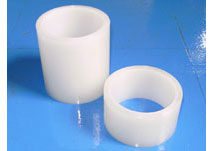Whether it’s based on a farm, smallholding, allotment or in a back garden, polytunnels are hugely useful. Designed to retain heat, they provide the ideal conditions for plant growth, meaning that your plans don’t have to be dictated by seasonal changes. While traditionally used for cultivating fruits and vegetables, many have been updated to house sheep and other livestock. Yet as hardy as they are, like anything, they can be susceptible to damage. Whatever’s caused yours to wane in standard, you can easily rectify it. Look no further than our guide to find out how to repair polytunnels effectively.
Tend to tears
 Tears can be annoying, especially on polytunnels. You may not notice the effect straightaway, particularly if it’s small, but the longer you leave it the larger it’s likely to become. So, it’s crucial to repair it as soon as you spot one. Luckily, it isn’t hard to do this – a lot of the time, it just takes some polytunnel tape.
Tears can be annoying, especially on polytunnels. You may not notice the effect straightaway, particularly if it’s small, but the longer you leave it the larger it’s likely to become. So, it’s crucial to repair it as soon as you spot one. Luckily, it isn’t hard to do this – a lot of the time, it just takes some polytunnel tape.
Don’t just reach for your nearest duct or carpet tape roll though. For this task, it’s best to use polytunnel repair tape. UV resistant and highly adhesive, polytunnel tape is perfect for repairing tears in polythene covers. Stick it to your polytunnel and you needn’t worry about anything – from the sun’s rays to strong storms – undoing your work.
Raise your plants
Do you use your polytunnel to grow plants in? If so, whereabouts are they growing? If it’s in the ground, you may want to temporarily transfer them into pots. That way, if you can’t fix a tear or rip with polytunnel repair tape straightaway, you don’t have to worry about its effect on the soil your plants are growing in.
This is particularly important if the damage occurs during winter or early spring, when frost and severe cold can freeze soil, causing roots to die from a lack of moisture. Re-home plants in the ground into pots and you can avoid the threat of frozen soil altogether. Alternatively, you can cover your plants with a polythene cloche to act as double glazing for your polytunnel, keeping the frost off your crops. As a result, you’ll have more time to learn about how to repair polytunnels properly.
Find a temporary home for sheep (especially lambs)
Do you use your polytunnel for housing sheep? If the answer’s yes, who could blame you? After all, sheep kept in naturally ventilated cold housing tend to be healthier and cheaper to feed than those kept outside and exposed to the elements.
This is largely because well-ventilated housing helps to prevent respiratory problems among sheep. While most sheep are able to withstand the cold, lambs typically aren’t – so it’s vital that they’re sheltered during cold periods. But if your shelter is in desperate need of some polytunnel repair tape, it could lose its positive impact on your livestock.
The solution? Place your sheep in temporary accommodation while you deal with the issue in hand. Is there a local farm that could put up your animals? Alternatively, you could rent a livestock shed or shelter.
Assess those rips
Just how big are the holes in your polytunnel cover? Bigger than a simple tear, by any chance? Are they, in fact, large rips or holes which the wind is catching? If so, it may be time to assess the effect they’re having. Realistically, will the cover still protect your plants during winter? Is the damage reducing the heat capacity of your polytunnel?
To find out, why not test its indoor temperature over a number of days? True, polytunnel tape is highly effective. But if the rip in your polytunnel is having an impact on its performance, you might be better off replacing it with a new polythene cover. Speaking of which…
Trust in a specialist
Does it look like you need to buy a new polytunnel? If the answer is yes, don’t worry – go with a specialist provider and you’ll be guaranteed a hardy cover that lasts for years. Though it might be tempting to go for the exact model you’re replacing, you could do worse than explore the market for alternatives. Depending on how long your previous one lasted for, the world of polytunnels may have changed since you last invested in it.
Also, your plants or livestock could benefit from a change in polytunnel cover or size. Go with an expert supplier and you’ll be more likely to find the polytunnel to suit your preferences.